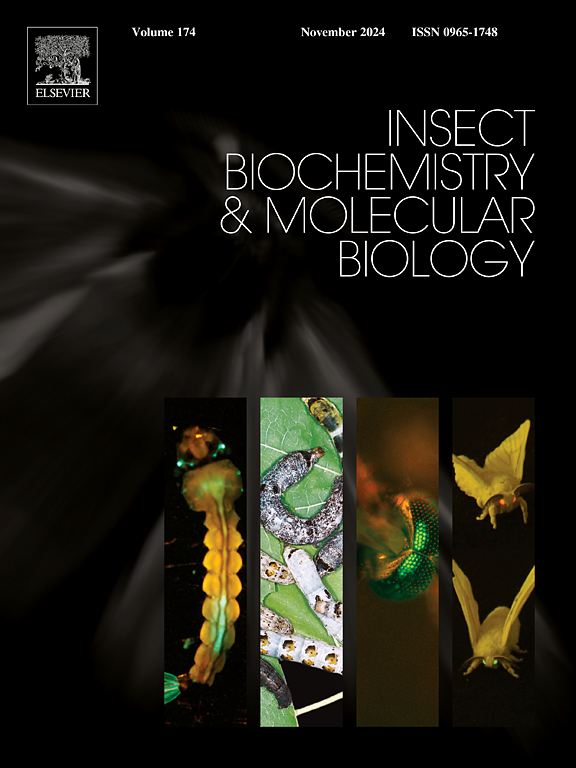Taste detection of flonicamid in Drosophila melanogaster
IF 3.7
2区 农林科学
Q2 BIOCHEMISTRY & MOLECULAR BIOLOGY
引用次数: 0
Abstract
Flonicamid, a widely used insecticide, presents an intriguing question: does it function as an antifeedant by directly activating bitter-sensing gustatory receptor neurons (GRNs) in Drosophila melanogaster. Here, we found that electrophysiological recordings revealed that S-type labellar sensilla exhibited strong neuronal responses to flonicamid, while inhibition of bitter-sensing GRNs nullified this response. Genetic screening identified Gr28b, Gr93a, and Gr98b as essential gustatory receptors for flonicamid detection. Isoform-specific rescue experiments confirmed that Gr28b.a is responsible for restoring sensory responses in Gr28b mutants. Proboscis extension response assays demonstrated that wild-type flies avoided flonicamid, whereas Gr28b, Gr93a, and Gr98b mutants failed to. Functional rescue of these mutants restored the behavioral response, confirming the involvement of these receptors in mediating gustatory aversion. Our findings uncover a novel sensory mechanism for detecting flonicamid through specific gustatory receptors and highlight their potential as molecular targets for insect control strategies.

氟虫胺对黑腹果蝇味觉的检测。
氟虫胺是一种广泛使用的杀虫剂,它提出了一个有趣的问题:它是否通过直接激活黑腹果蝇的苦味感知味觉受体神经元(grn)而起拒食作用?在这里,我们发现电生理记录显示s型标签感受器对氟硝胺表现出强烈的神经元反应,而苦味感知grn的抑制使这种反应无效。基因筛选发现Gr28b、Gr93a和Gr98b是检测氟硝昔胺必需的味觉受体。同种异构体特异性拯救实验证实Gr28b。a负责恢复Gr28b突变体的感觉反应。长鼻扩展反应实验表明,野生型果蝇对氟虫胺没有反应,而Gr28b、Gr93a和Gr98b突变体则没有。这些突变体的功能修复恢复了行为反应,证实了这些受体在介导味觉厌恶中的作用。我们的发现揭示了一种新的通过特定味觉受体检测氟硝胺的感觉机制,并强调了它们作为昆虫控制策略的分子靶点的潜力。
本文章由计算机程序翻译,如有差异,请以英文原文为准。
求助全文
约1分钟内获得全文
求助全文
来源期刊
CiteScore
7.40
自引率
5.30%
发文量
105
审稿时长
40 days
期刊介绍:
This international journal publishes original contributions and mini-reviews in the fields of insect biochemistry and insect molecular biology. Main areas of interest are neurochemistry, hormone and pheromone biochemistry, enzymes and metabolism, hormone action and gene regulation, gene characterization and structure, pharmacology, immunology and cell and tissue culture. Papers on the biochemistry and molecular biology of other groups of arthropods are published if of general interest to the readership. Technique papers will be considered for publication if they significantly advance the field of insect biochemistry and molecular biology in the opinion of the Editors and Editorial Board.

 求助内容:
求助内容: 应助结果提醒方式:
应助结果提醒方式:


